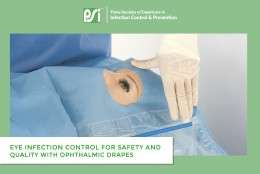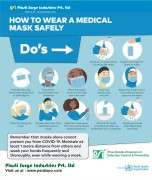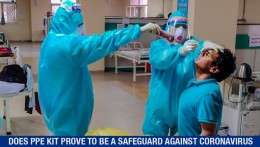One of the best Surgical Disposables company. I am dealing with them for the past 5 years,
their products are world-class. Their approach to trade is professional. All the best wishes to
them.
Crossing the Bridge: How Patient Safety Shapes Unified Healthcare Systems
- By: Plasti Surge Industries

Unified healthcare systems have joined the various healthcare services and providers with the aim of providing coordinated care to patients with the emphasis of quality, accessibility and efficiency. The involved measures and goals are aimed at Simplify Care Access, Increase Health outcomes and optimizing resource usage. The integrated aspect of patient safety promotes freedom from harmful treatment, which the healthcare risk management strives to minimize the possible threats. Hence, patient safety systems focus on creating a quality delivery exercise with appropriate standards and practices expected to prevent errors and create positive patient care.
Patient safety is the cornerstone of healthcare quality improvement, emphasizing the reduction of medical errors and adverse events. By prioritizing safety, healthcare systems aim to deliver care that is effective, efficient, and patient-centered. This focus on safety not only improves patient outcomes but also builds trust and ensures a higher standard of care.
The Role of Patient Safety in Shaping Systems
 Patient safety standards play a crucial role in pushing for the integration of health care services, given that such standards automatically require an integrated approach to patient care. Healthcare risk management is also enforced by the standards, by identifying likely safety challenges and coming up with ways to prevent this. As a result, the focus on safety promotes the adoption of similar or at least similar protocols and procedures in the delivery of healthcare services in various healthcare facilities. In patient safety healthcare systems, these practices are critical in reducing mistakes, improving results, and making a positive contribution to patients’ experiences. Such integrated service not only optimizes the efficiency of service delivery but also communicates the consideration for patient safety as a significant concern.
Patient safety standards play a crucial role in pushing for the integration of health care services, given that such standards automatically require an integrated approach to patient care. Healthcare risk management is also enforced by the standards, by identifying likely safety challenges and coming up with ways to prevent this. As a result, the focus on safety promotes the adoption of similar or at least similar protocols and procedures in the delivery of healthcare services in various healthcare facilities. In patient safety healthcare systems, these practices are critical in reducing mistakes, improving results, and making a positive contribution to patients’ experiences. Such integrated service not only optimizes the efficiency of service delivery but also communicates the consideration for patient safety as a significant concern.
Impact on Policy and Regulation
Patient safety issues also significantly inform most healthcare policies at both national and international levels. To guarantee patients high-quality health services, the authorities and health organizations issue regulations and standards that compel both public and private institutions to practice patient safety. International and national regulations are meant to create a common ground for the healthcare systems; hence they are supposed to comply with the highest level of patient safety. Regulation is one of the drivers of performance as it creates a force for competition within the sector, hence forces it to make changes that enhance patient safety.
Technology and Patient Safety
Technology integration, including the use of electronic health records and telemedicine, in unified healthcare systems is vital to improving healthcare quality. Patient safety is increased when patient data is accurate, immediately accessible, and real-time, allowing patients to receive timely care, reducing the chance of mistakes, and ultimately improving healthcare.
Benefits:
- Enhanced Accessibility: Immediate access to patient histories for better treatment decisions.
- Improved Coordination: Easier collaboration among healthcare providers.
- Reduced Errors: Automated checks to minimize manual mistakes.
- Data Analytics: Insightful analytics for personalized care plans.
- Patient Engagement: Empowers patients with access to their health information.
Challenges:
- High Costs: Significant investment is required for technology and training.
- Privacy Concerns: Risks associated with data breaches and patient confidentiality.
- Technology Adoption: Resistance from staff unfamiliar with new systems.
- Interoperability Issues: Difficulty in integrating different technologies seamlessly.
- Maintenance and Updates: Ongoing need for technical support and system upgrades.
Training and Education
The continuous education and training of healthcare professionals are also central to ensuring high safety standards, which are essential for efficient healthcare risk management. This necessitates the role of health systems to ensure unified training frameworks and approaches to best practices. With unified health systems, health professionals obtain similar training, which ensures that regardless of geographical location or specialization, the health workers have access to the most recent guidelines and techniques in patient safety. It promotes the rapid share and wide-scale dissemination of safety best practices across the health sector while also enabling a concerted and harmonious front in healthcare risk management for enhanced patient risk management.
Patient Involvement

Patient engagement and education are integral parts of an effective patient-safety-centered healthcare system since educated patients are more likely to participate in their care actively and thus obtain improved health outcomes. Unified healthcare systems provide an excellent opportunity for such engagement, as they allow patients to access all necessary health information and other resources and tools for education and communication. In addition, integrated systems simplify and accelerate the feedback collection and analysis process, making it easier to identify and address safety issues quickly. Furthermore, unified systems contribute to a culture of excellence, as they ensure that patients’ voices are heard and taken into consideration, thereby improving trust and cooperation between patients and healthcare providers.
Future Directions
Future trends in patient safety healthcare systems are expected to revolve around healthcare quality improvement, with the following changes and developments anticipated. Firstly, artificial intelligence and machine learning are poised to change the approach to error detection as well as prediction and forecasting. This will enable a more proactive strategy in ensuring patient safety. Secondly, telehealth is likely to become the dominant practice with no geographical constraints, ensuring maximum accessibility. Thirdly, policy changes are likely to account for transparency and accountability, meaning that systems will have to be increasingly more open about their performance. Finally, global health projects will facilitate an international partnership aimed at enhancing patient safety initiated by best practices and innovations exchange. Ultimately, all these changes will make the healthcare system more robust and flexible.
Conclusion
In our exploration of patient safety within unified healthcare systems, we've underscored its paramount importance as the cornerstone of healthcare quality improvement. From the integration of healthcare services facilitated by patient safety standards to the adoption of advanced technologies and continuous professional training, every aspect contributes to a safer, more efficient, and equitable healthcare environment. Unified systems enhance this by standardizing protocols and fostering patient engagement, preparing us for future advancements and policy shifts aimed at further safety enhancements.
To learn more about our commitment to advancing patient safety and healthcare quality, visit www.psidispo.com. Join us in shaping a safer healthcare future—your insight and involvement are invaluable to our mission. Together, let's continue to elevate patient safety standards, ensuring healthcare systems remain effective, efficient, and equitable for all.
One of the best companies to partner with. Very responsive and best product quality.
Good experience and corporation for many years. Timely services are provided.
We have been associated with PSI since more than 20 years now. They have superior products, prompt service & courteous people. Using PSI’s products in turn makes our customer happy and helps us to do more business. Overall truly delighted with their customer service.

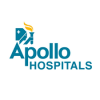

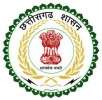
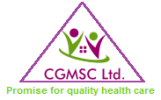
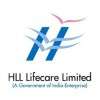
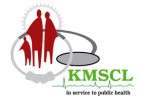



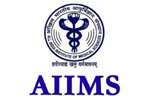
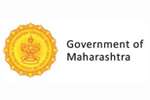


_iCEz.jpeg)
 +91-7798800781
+91-7798800781
